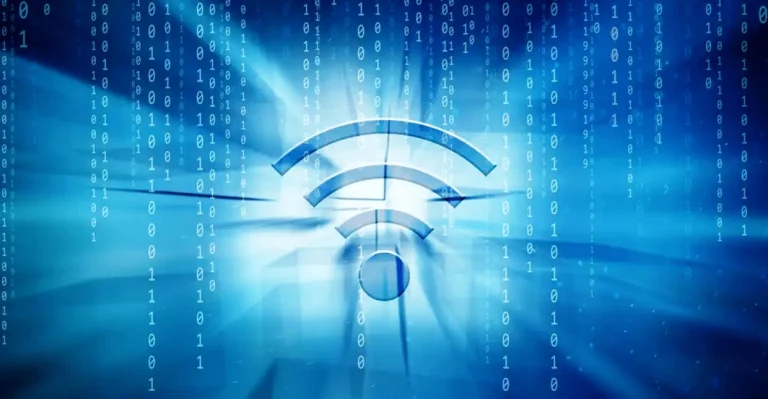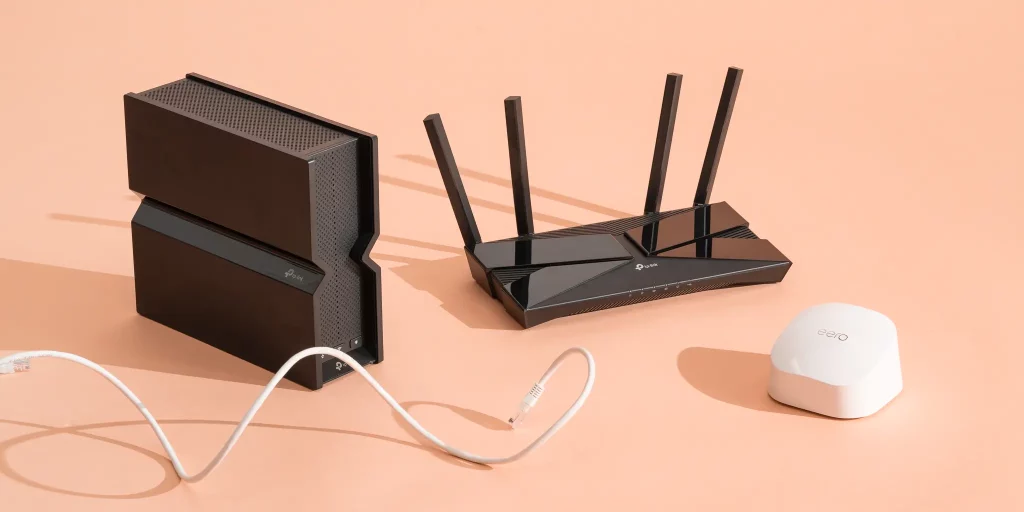- General
- Updated on June 20, 2025
The Health Effects of Wi-Fi Radiation: What the Research Says

Introduction
In the modern world, Wi-Fi has become as essential as electricity or running water. It powers our internet connections, keeps our devices synced, and supports everything from remote work to smart homes. But with this growing dependence on wireless connectivity, a question lingers: Is Wi-Fi radiation harmful to our health?
Concerns about the Health Effects of Wi-Fi Radiation, including exposure to electromagnetic fields (EMFs) and radiofrequency (RF) radiation from wireless devices, have sparked public debate and ongoing scientific inquiry. While Wi-Fi makes our lives more convenient, some experts caution that constant exposure to wireless signals could pose health risks—especially with the proliferation of connected devices in homes, schools, and workplaces.
This blog explores the nature of Wi-Fi radiation, what current scientific studies say about its impact on human health, and what you can do to reduce unnecessary exposure.
Understanding Wi-Fi Radiation: What Is It?

Wi-Fi operates using non-ionizing radiation, a type of electromagnetic field (EMF) in the radiofrequency (RF) range, typically between 2.4 GHz and 5 GHz. These frequencies are similar to those used by microwave ovens and cell phones but at significantly lower power levels.
Importantly, non-ionizing radiation does not carry enough energy to ionize atoms or damage DNA directly, unlike ionizing radiation (e.g., X-rays or gamma rays). Because of this, many scientists and regulatory agencies have historically viewed Wi-Fi as low risk when used within recommended exposure limits.
The Health Effects of Wi-Fi Radiation
While Wi-Fi radiation is classified as non-ionizing, research over the past two decades has raised concerns about biological effects from prolonged or high-intensity exposure. Let’s explore what the evidence reveals:
1. Cancer Risk and Wi-Fi Exposure
In 2011, the World Health Organization’s International Agency for Research on Cancer (IARC) classified RF radiation as “possibly carcinogenic to humans” (Group 2B). This classification was based largely on studies linking heavy cell phone use to a potential increased risk of glioma, a type of brain cancer.
Although the classification did not focus specifically on Wi-Fi, the electromagnetic radiation emitted by routers and wireless devices falls within the same RF range, prompting questions about potential long-term cancer risk—especially from chronic low-level exposure.
However, current evidence is inconclusive. A major review by the National Toxicology Program (NTP) in the U.S. found evidence of “clear carcinogenic activity” from high levels of cell phone RF radiation in rats, but the levels used in the study were significantly higher than typical Wi-Fi exposure. Most scientists agree that more human-based studies are needed to determine whether Wi-Fi poses a similar risk.
2. Fertility and Reproductive Health
Some studies have suggested a link between RF radiation and reduced sperm quality. A 2015 review published in Reproductive Biology and Endocrinology concluded that exposure to mobile phones and Wi-Fi could negatively affect sperm motility, viability, and morphology.
The concern here is that electromagnetic radiation might increase oxidative stress, leading to cellular damage in reproductive tissues. However, the majority of these studies were animal-based or in vitro, meaning results may not directly translate to real-world human exposure.
Despite the uncertainty, some health professionals recommend limiting direct laptop or router exposure to reproductive organs, especially during pregnancy or in men trying to conceive.
3. Sleep Disruption and Cognitive Function
Exposure to EMFs, including Wi-Fi, has been associated with changes in brain activity that could impact sleep quality and mental clarity. Several small studies suggest that nighttime RF exposure may:
- Delay melatonin production (a hormone that regulates sleep).
- Disrupt circadian rhythms.
- Affect brainwave activity, particularly in deeper stages of sleep.
For example, a study published in Journal of Sleep Research found that exposure to RF fields before bed altered EEG patterns in participants, indicating potential changes in sleep architecture.
Although these findings are not definitive, they point to the need for caution, particularly for individuals who already struggle with insomnia or poor sleep hygiene. Turning off Wi-Fi routers at night or placing devices in airplane mode are simple ways to reduce overnight exposure.
4. Neurological Symptoms and Electromagnetic Sensitivity
A small subset of the population claims to suffer from Electromagnetic Hypersensitivity (EHS)—a condition characterized by symptoms such as:
- Headaches
- Fatigue
- Dizziness
- Nausea
- Trouble concentrating
These individuals report worsened symptoms when exposed to wireless devices or Wi-Fi networks. However, double-blind trials have largely failed to prove a causal relationship between EMF exposure and these symptoms.
That said, psychosomatic factors may still lead to genuine distress. Even without clear biological markers, those with EHS may benefit from limiting exposure and creating EMF-free environments to manage symptoms.
5. Effects on Children and Adolescents
Children are thought to be more vulnerable to EMF radiation due to their developing nervous systems and thinner skulls. Given the increasing use of Wi-Fi in schools and digital learning environments, the potential risks to young people have sparked particular concern.
A 2016 study in Environment International suggested a correlation between mobile phone use and behavioral problems in children, though confounding variables (like screen time) complicate the results. The European Parliament and some national health bodies, such as France’s ANSES, have called for precautionary measures, including limiting Wi-Fi in early education settings.
What Do Regulatory Agencies Say?
1. World Health Organization (WHO)
The WHO recognizes public concern about EMFs but states that current evidence does not confirm any adverse health effects from low-level RF exposure typical of Wi-Fi.
2. U.S. Federal Communications Commission (FCC)
The FCC has set safety standards for RF exposure, but these were last updated in 1996—long before Wi-Fi and smartphones became ubiquitous. Critics argue that these standards are outdated and do not account for cumulative or long-term exposure.
3. European Precautionary Guidelines
Some European countries have adopted stricter recommendations. For example, Belgium and France have limited the use of Wi-Fi in schools and promoted wired internet alternatives in classrooms.
How to Reduce Wi-Fi Exposure Without Going Offline
If you’re concerned about the potential health effects of Wi-Fi radiation, there are practical steps you can take to minimize exposure—especially during rest or recovery:
1. Turn Off Wi-Fi at Night
Shutting down your router while you sleep can reduce prolonged EMF exposure during your body’s recovery period.
2. Use Wired Connections Where Possible
Use Ethernet cables for devices like desktops or gaming consoles to avoid constant wireless transmission.
3. Keep Devices Away from Your Body
Avoid resting laptops or tablets on your body. Place them on a desk or stand instead.
4. Create EMF-Free Zones
Designate certain areas—such as your bedroom—as tech-free zones to allow your body to rest without interference.
5. Use Low-EMF Routers
Some routers offer a “low radiation” or “eco” mode that reduces signal strength or turns off Wi-Fi when idle.
Also Read: Why Reading Books Is Still Important in the Digital Age
Conclusion
The health effects of Wi-Fi radiation remain an ongoing area of study, with many unanswered questions. While the current body of scientific evidence does not conclusively prove that Wi-Fi is harmful at everyday exposure levels, it also doesn’t rule out the possibility of subtle or long-term biological effects, particularly for vulnerable populations.
Taking a precautionary approach—limiting unnecessary exposure and staying informed—is a balanced way to embrace technology while protecting your health. As more data becomes available, our understanding of Wi-Fi’s safety profile will continue to evolve, helping individuals make smarter choices in our ever-connected world.
Join the discussion
Related Articles
No results available
ResetTrending Articles


- General
- Updated on December 5, 2025


- General
- Updated on December 2, 2025


- General
- Updated on December 5, 2025


- General
- Updated on November 27, 2025


- Health
- Updated on November 24, 2025


- General
- Updated on November 24, 2025


- General
- Updated on November 19, 2025


- General
- Updated on November 19, 2025


- General
- Updated on November 14, 2025


- Tech
- Updated on November 12, 2025
No results available
Reset


